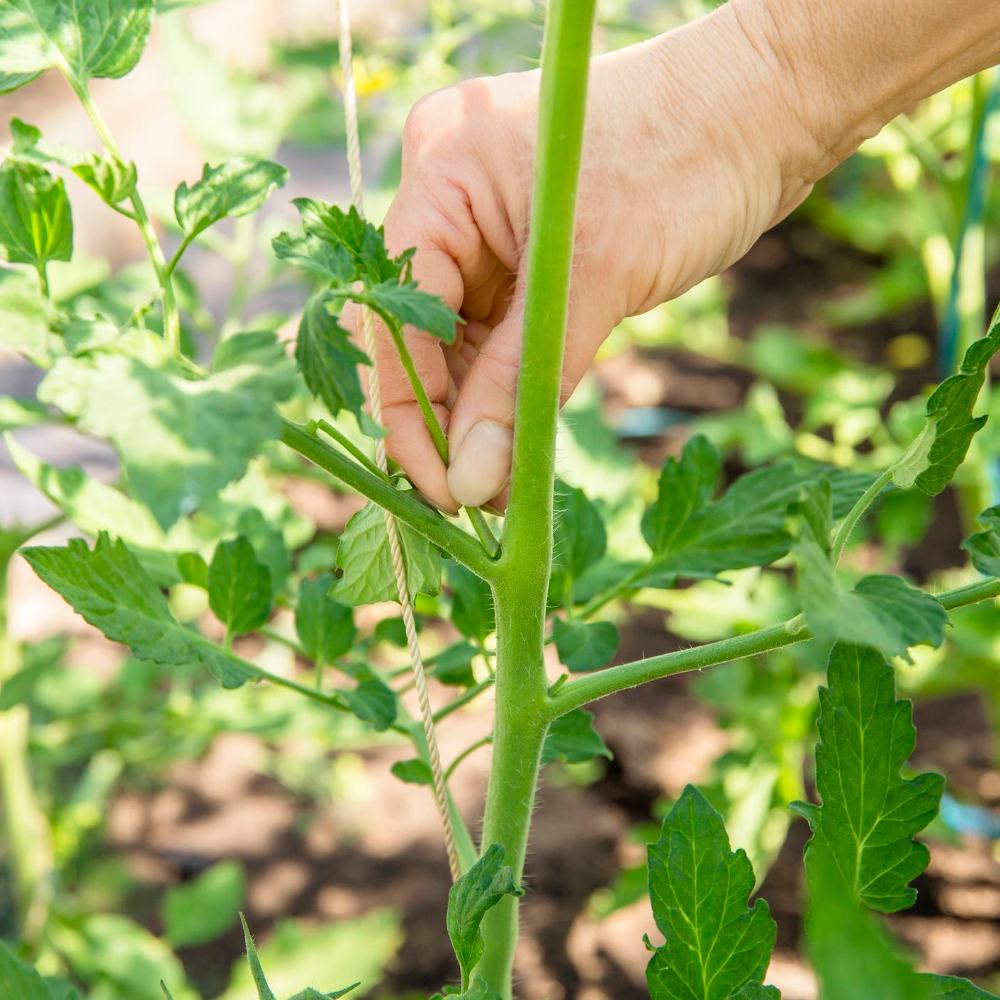Pruning tomato plants is essential for ensuring their health and maximizing yield. This guide will delve into the best practices for pruning tomatoes, explaining why it’s crucial and how proper technique can lead to a bumper crop of this beloved fruit.
Why Prune Tomato Plants?
Pruning is more than just trimming; it’s a vital part of tomato care. It helps to:
- Improve airflow, which reduces the risk of diseases.
- Increase sunlight penetration, ensuring fruits ripen evenly.
- Redirect energy to fruit production rather than leaf growth.
Understanding the structure of your tomato plants is the first step towards effective pruning. Tomato plants can be categorized into two main types: determinate (bush) and indeterminate (vining).
Determinate tomatoes grow to a certain height and then stop, focusing all their energy on fruiting over a short period of time. They require minimal pruning and are often recommended for container gardening.
Indeterminate tomatoes, on the other hand, continue to grow and produce fruit throughout the growing season. These require more regular pruning to keep them manageable and productive.

Tools You Will Need
Before you start pruning, ensure you have the right tools. These should include:
- A pair of sharp, clean pruning shears.
- Disinfectant for tools to prevent disease spread.
- Gardening gloves to protect your hands.
Step-by-Step Guide to Pruning Tomato Plants
Step 1: Identify Suckers to Remove
Suckers are small shoots that grow in the axils (the angles between the main stem and the branches). On indeterminate tomatoes, removing these can help direct more energy into fruiting. Leave the main stem and a few strong branches to become the fruit-bearing parts of the plant.
Step 2: Remove Lower Leaves
Removing the leaves that are closest to the soil surface can help prevent soil-borne diseases from splashing up and infecting the plants. This is particularly crucial after the plant has begun to set fruit.
Step 3: Thin Out Excess Branches
If your plant is very dense, thin out some of the branches to improve air circulation. This not only helps prevent disease but also allows more sunlight to reach the fruits, which aids in ripening.
Step 4: Top Off the Plant
This is mostly relevant for indeterminate tomatoes later in the season. Topping involves cutting off the top of the main stem, which encourages the plant to stop growing upwards and focus more on the fruits already developing.
Best Practices for Pruning
- Prune in the morning: This allows the wounds to heal over during the day, reducing risk of infection.
- Never prune wet plants: Wet conditions can spread diseases quickly.
- Be conservative: Especially with determinate varieties, where too much pruning can drastically reduce your yield.
Monitoring Your Plants
After pruning, keep an eye on your tomato plants. Healthy plants should show vigorous growth and eventually produce a healthy crop of tomatoes. Signs that your plant is thriving include deep green leaves, sturdy stems, and a gradual increase in flower and fruit production.
Conclusion
Pruning tomato plants might seem like a chore, but it’s a crucial step towards healthier plants and a more fruitful harvest. Whether you’re a seasoned gardener or a beginner, following these tips for pruning tomatoes can significantly enhance your garden’s productivity and the health of your tomato plants.
Frequently Asked Questions
- How often should I prune my tomato plants?
- For indeterminate varieties, check your plants weekly and prune as needed. Determinate varieties require less frequent pruning.
- Can pruning impact tomato flavor?
- Indirectly, yes. By improving air circulation and sunlight exposure, pruning can help develop sweeter, more flavorful tomatoes.
- What’s the best way to dispose of removed suckers and leaves?
- Compost healthy plant material. Dispose of diseased leaves off-site to prevent spreading any infection.
With the right care and some strategic pruning, your tomato plants will not only be healthier, but they’ll also provide you with a plentiful harvest that any gardener would be proud of. Happy gardening!

